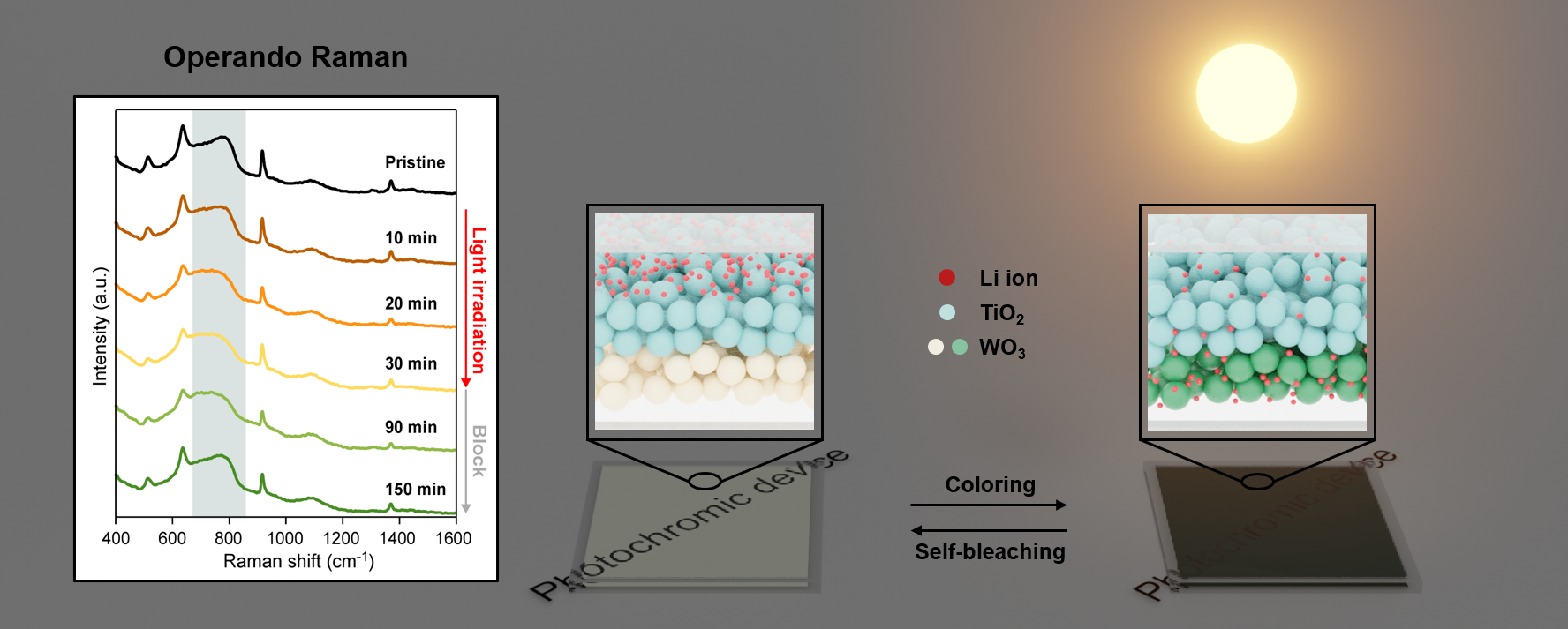
전소연 (제1저자, 박사과정)
Automatically controlling the optical transmittance of solar light provides an energy-saving strategy for designing energy-efficient buildings. Ideally, the smart windows should be able to show homogeneous and large-scale color-switching performance while modulating the intensity of daylight. Among the suitable candidates for smart windows, the photochromic device has a great potential for homogenous and large-scale color-switching material. In a photochromic device, the intercalation/deintercalation of Li-ions is a key step determining the kinetics and efficiencies of the coloring/bleaching process. Herein, we exploit operando Raman spectroscopy to investigate the photochromic mechanism, which reveals the movement of Li ions into specific sites within the tunnels that exist in hexagonal tungsten oxide (WO3). These spectroscopic results demonstrate that the intercalation/deintercalation of the Li ions is related to specific sites in the WO3 lattice which stabilizes the energy of the intermediate state during the coloring/self-bleaching process. Additionally, theoretical simulation supports that electrons, as well as Li ions, participate in the color-switching performance. This study improves our understanding of the photochromic performance of this special device and opens up a research field toward the development of smart windows applications.

https://doi.org/10.1016/j.nanoen.2020.105721
 Synergistic Effects on Lithium Metal Batteries by Preferentia...
Synergistic Effects on Lithium Metal Batteries by Preferentia...
 Ultrafast intraband Auger process in self-doped colloidal qua...
Ultrafast intraband Auger process in self-doped colloidal qua...

















